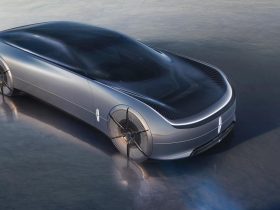
An electric motor in my muscle car? Don’t cringe, but it will have to happen.
The white elephant in the room is how much, and how far can we push the current internal combustion engine (ICE) technology to raise performance and lower fuel consumption. Carmakers have been pushing opposing piston technology for decades. Mazda has done a tremendous job, as you can see from our last Mazda6 Skyactiv test drive and review. Many manufacturers have finally turned to direct chamber injection, turbos and raise the compression levels to 13:1, sometimes even 15:1, something once left for racing. But the question remains, how far and how much more?
Mazda says it has found ways to raise the compression to even higher levels, and claims to have even more leeway with its Skyactiv system. Its Skyactiv system works around three pillars, better engine performance, lightened chassis and reduced friction. In the meantime, we are seeing more SUVs, crossovers, pickup trucks coming on the market with somewhat improved fuel economy. If a few years ago the rage was all about electric motors helping the venerable ICE platform, these days carmakers are woring on lowering weight, as in the new Ford F-150 aluminum chassis.
The electric motor’s advantage.
No matter how much we push ICE technology, electric motors have incredible torque for a relatively small and light motor. If the battery weight, size and price have been a problem in the past, all of these are being addressed today. Lithium battery price has come down over the past decade, and continues to do so. Lab research have shown chemistries that are even lighter and more energy dense. This solves the weight and size issues in the long run. The electric motor is the easiest and cheapest to raise the performance level of our vehicles.
It will come from racing again.
Audi’s diesel racing technology has certainly raised the bar higher than before. No longer are diesel engines noisy and smoky. But the rest of the racing world is clearly working on hybrid systems to boost performance. From Formula 1 to prototype racing, there are at least one or ore vehicles sporting an electric motor. From GM to Ferrari, the future is clear, any performance gain points to a judicial use of an electric motor. So why do muscle car lovers cry foul at the idea of a small electric motor raising performance? It most likely boils down to image and what we are accustomed to, mainly noise, vibrations and rumbles.
Tomorrow’s performance cars will have electric motors
It doesn’t take a crystal ball to make that prediction. No matter how you look at it, all modern performance cars will have to adopt am electric motor sooner or later. Ferrari did it, so did Porsche and even McLaren. Who is next? How about Nissan’s GT-R, or Mitsubishi’s wild Lancer Evolution. These two chassis are some of the most fun for your buck and would only gain from an extra electric motor. What about the next Ford Mustang, or Corvette? Both of these cars will have to lower their weight thorugh the use of tough light materials, as well as add an electric motor to the drivetrain. Noise and vibrations might change somewhat, but the added sensations, along with the fuel savings will thrill more than one. The electrific performance has to happen.
It will take some education convincing the few left of the advantages an electric motor offers over and ICE system. With 100% torque available as soon as it spins, with RPMs as high as 12,000 to 14,000 RPM and above, we can only wonder how far we can push ICE technology without the help of an electric motor, or two, or more. Essentially, efficiency is at stake, and the electric motor is the best way to continue making performance cars, especially muscle cars.







